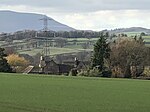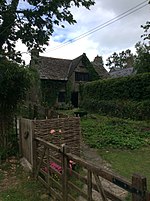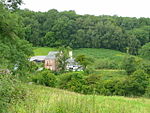St Teilo's Church, Llantilio Crossenny
13th-century church buildings in WalesChurch in Wales church buildingsGrade I listed churches in Monmouthshire

The Church of St Teilo is the parish church of Llantilio Crossenny, Monmouthshire, Wales. "An unusually grand cruciform church", with an Early English tower crossed by a Decorated chancel, it was designated a Grade I listed building on 19 November 1953The church is dedicated to Saint Teilo.
Excerpt from the Wikipedia article St Teilo's Church, Llantilio Crossenny (License: CC BY-SA 3.0, Authors, Images).St Teilo's Church, Llantilio Crossenny
B4233,
Geographical coordinates (GPS) Address External links Nearby Places Show on map
Geographical coordinates (GPS)
| Latitude | Longitude |
|---|---|
| N 51.8302 ° | E -2.8737 ° |
Address
St Teilo's Church
B4233
NP25 5HP , Whitecastle
Wales, United Kingdom
Open on Google Maps











